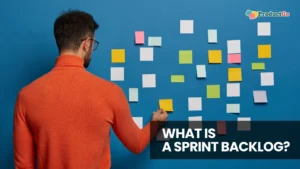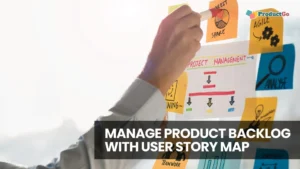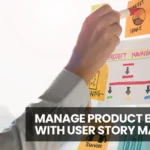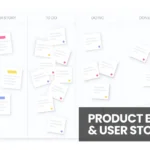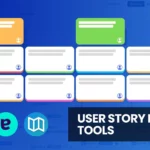In the world of project management, Agile is a method that helps teams adapt quickly and deliver great products. Central to this approach is a key player: the Agile Product Owner. This person has a big job, acting as the bridge between the team making the product and the people who will use it. They make sure everyone’s working on the right things at the right time.
This guide is your flashlight into the world of an Agile Product Owner. We’ll break down what they do, why they’re important, and how you can become one.
Table of Contents
What is Agile product owner?
An agile product owner plays a key role in agile software development, particularly within the Scrum framework. They are the champions of the product, ensuring it delivers maximum value to the customer and stakeholders.
An Agile Product Owner is a product champion, backlog manager, and value delivery officer, all rolled into one. They are instrumental in ensuring that the right product is built, in the right way, to maximize customer satisfaction.
→ Related content: Product Owner vs Product Manager vs Business Analyst
Core Responsibilities of an Agile Product Owner
The Agile Product Owner is a multi-faceted role: product visionary, backlog maestro, and value delivery champion. They steer the development process towards building the right product, the right way, to achieve maximum customer satisfaction.

This role wears many hats and has a critical impact on the success of an Agile development team. Here’s a breakdown of their key responsibilities:
Vision and Strategy
- Understanding the Product Vision: The Product Owner dives deep to comprehend the overall vision and strategic goals for the product. This includes understanding the target market, customer needs, and how the product fits into the bigger picture.
- Creating a Product Roadmap: Based on the product vision, they craft a roadmap that outlines the product’s development journey. This roadmap prioritizes features and functionality, providing a high-level view of the product’s evolution.
Product Backlog Management
- Backlog Ownership: The Product Owner is the master of the product backlog, a prioritized list of features, user stories, bugs, and other tasks the development team works on.
- Backlog Refinement: They continuously refine the backlog, ensuring each item is clear, concise, and sized appropriately for the development team’s capacity.
- Prioritization for Value: One of their most crucial tasks is prioritizing the backlog items based on factors like customer value, business goals, and effort required. The aim is to deliver the most valuable features first.
Communication and Collaboration
- Stakeholder Communication: The Product Owner acts as a bridge between various stakeholders, including customers, executives, and the development team. They gather feedback from customers, answer questions from stakeholders, and ensure everyone is aligned on product priorities.
- Collaboration with the Development Team: They work closely with the development team to understand their capabilities and capacity. This fosters a collaborative environment where the team can effectively translate backlog items into working features.
Acceptance and Delivery
- Defining Acceptance Criteria: The Product Owner collaborates with the development team to define clear acceptance criteria for each backlog item. These criteria determine when a feature is considered “done” and meets the required functionality.
- Owning the Product Vision: Ultimately, the Product Owner has the final say on product vision and functionality. They ensure the product aligns with the overall strategy and delivers value to the target audience.
Continual Improvement
- Evaluation and Learning: The Product Owner actively gathers feedback on the product throughout the development lifecycle. They analyze this feedback to identify areas for improvement and ensure the product continues to meet customer needs.
→ Related content: How to Be An Effective Product Owner
Skills for a successful Agile product owner
An Agile Product Owner needs a blend of hard and soft skills to be successful. Here’s a breakdown of some key areas:

Core Skills
- Communication: Excellent communication is paramount. The Product Owner bridges the gap between technical and non-technical audiences, conveying product vision to stakeholders and collaborating effectively with the development team.
- Analytical Thinking: They need to analyze customer needs, market trends, and business goals to prioritize the product backlog effectively.
- Decision-Making: Prioritization often involves tough calls. The Product Owner must make data-driven decisions that consider customer value, technical feasibility, and business impact.
- Product Vision and Strategy: A strong understanding of the product vision and its strategic role is essential. The Product Owner translates this vision into actionable items for the development team.
Essential Soft Skills
- Customer Focus: A deep understanding of customer needs and a relentless focus on delivering value to them is key.
- Collaboration: The Product Owner fosters a collaborative environment where the development team thrives. This requires active listening, clear communication, and a willingness to work together.
- Adaptability: The Agile environment is dynamic, so the ability to adapt to changes in priorities, requirements, or market conditions is crucial.
- Leadership: While not a hierarchical leader, the Product Owner inspires and motivates the development team, guiding them toward achieving product goals.
Bonus Skills
- Technical Acumen: While not mandatory, having a basic understanding of development processes and technical concepts can be beneficial. This allows the Product Owner to have better conversations with the development team and make informed decisions.
- Project Management: Basic project management skills are helpful for managing the product backlog, prioritizing tasks, and staying on track with deadlines.
Pathways to Becoming a Product Owner
There are multiple paths to becoming a successful Agile Product Owner. The best route depends on your current background and experience. Here’s a breakdown of the key steps:

Educational Background and Work Experience
- Leverage Existing Skills: If you have experience in project management, business analysis, or software development, you’ve got a solid foundation. These roles often translate well into Product Ownership due to the overlap in core skills.
- Consider Domain Expertise: Deep expertise in a specific industry can be a valuable asset. Combine this with Agile training and product management skills to become a niche Product Owner within your field (e.g., FinTech, Healthcare).
- Starting Afresh: If you’re new to the field, consider:
- Bootcamps & Online Courses: Many programs focus on Agile product ownership, providing a comprehensive foundation in Agile methodologies, product management principles, and essential skills.
- Entry-Level Agile Roles: Start as a Junior Product Owner or Business Analyst within an Agile team. This can provide valuable hands-on experience and mentorship from seasoned professionals.
Certifications and Further Learning
- Self-Learning: Take advantage of online resources, articles, and books on Agile and product management. Familiarize yourself with Scrum, user stories, product roadmaps, and backlog management.
- Networking: Connect with other Product Owners and Agile professionals. Attend industry meetups, conferences, or online communities to learn from their experiences and build your network.
- Certifications (Optional): While not mandatory, certifications like Certified Scrum Product Owner (CSPO) can validate your knowledge and make you a more competitive candidate.
Gaining Practical Experience
- Build a Portfolio: Look for opportunities to showcase your product management skills.
- Volunteer for a startup or open-source project.
- Create a personal product concept to demonstrate your understanding of the product development process.
- Real-world Application: Look for opportunities to apply your knowledge in real-world scenarios.
- Internship within a product development team.
- Freelance product ownership role for a small business.
→ Improve your Agile product owner skills with ProductGo – Agile User Story Map, Portfolio Roadmaps & Persona for Jira
Final Words
The role of an Agile Product Owner is multifaceted and endlessly rewarding. By wielding a blend of strategic vision, communication mastery, and unwavering customer focus, you can become an instrumental force in crafting exceptional products that bring true value to the world.
So, are you ready to embrace the challenge and become an Agile Product Owner? With dedication and the knowledge you’ve gained here, you can illuminate the path to success!


